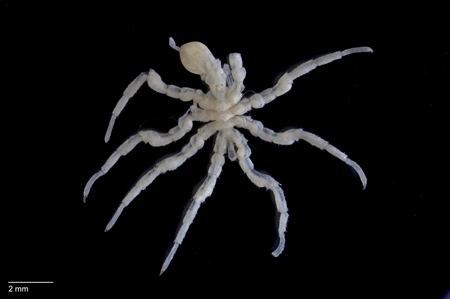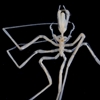Other Names
- Sea spider
General Description
Body with proboscis projecting outward from front, with the mouth at the tip. Central body (trunk) behind the proboscis, with a raised, rounded area (tubercle) bearing four or more eyes. Eight segmented walking legs attached to the sides of the trunk. Long abdomen behind trunk, segmented at base, usually angled downwards. Leg span about 2 cm.
Biology
The male carries eggs in a sausage-like mass wrapped around part of the body. The scientific name of this species refers to the compact size of the body. Males carry the eggs, holding them between body parts called ovigers that hang under the animal.
Habitat
Intertidal areas, usually under rocks.
Reefs
Coastal shores
Distribution guide
South-eastern Australia, including western and central Victoria.
Species Group
Depth
Shore (0-1 m)
Shallow (1-30 m)
Water Column
Max Size
2 cm
Commercial Species
No
Global Dispersal
Native to Australia
Conservation Status
- DSE Advisory List : Not listed
- EPBC Act 1999 : Not listed
- IUCN Red List : Not listed





